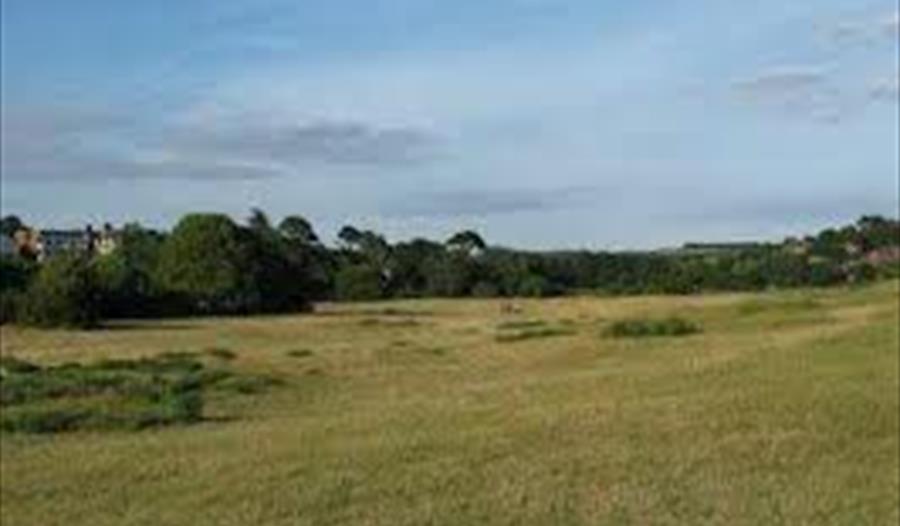The Maer Local Nature Reserve is an area of sand dunes, which before the construction of the road along the sea front, would have been a landward extension of the bigger dunes on the beach. It is well used by locals and wildlife alike, however much of the wildlife goes unnoticed by visitors, so it’s worth a closer look.
Warm, sandy soil means a haven for insects. Many unusual solitary bees and wasps make their nest tunnels in the sand and get on with raising their larvae out of sight of the casual observer – look for tiny bees flying out of holes in the ground. To get a really close up view it’s a good idea to get down to the burrow level and wait for a returning adult. The bees, although equipped with a sting are harmless to humans, but do not disturb them as they go about the business of raising their brood.
Skylarks are a species of British bird that have suffered a massive decline in recent years. However there are still a handful of pairs that regularly use the Maer in the summer months for breeding. If disturbed a skylark will fly up singing loudly, filling the air with its beautiful call.
The harsh soil conditions mean that specialised and rare plants can grow on this site. Many small, unobtrusive plants, including a number of tiny grasses, survive on areas of bare soil eroded by visitors. Sea holly is locally rare, but grows very well on the seaward side of the nature reserve. Looking like a small blue-grey thistle, sea holly is actually a member of the carrot family!
There are many different species of clover growing here, including several nationally important species. Look out for the fluffy flower heads of hare’s foot clover which, as its name suggests, resemble little rabbit feet – unmistakable.
Access:
There are no formal access tracks around the reserve, and you are free to explore the area fully.
Opening Times
| The Maer Local Nature Reserve (1 Jan 2025 - 31 Dec 2025) |
|---|
 to add an item to your Itinerary basket.
to add an item to your Itinerary basket.
